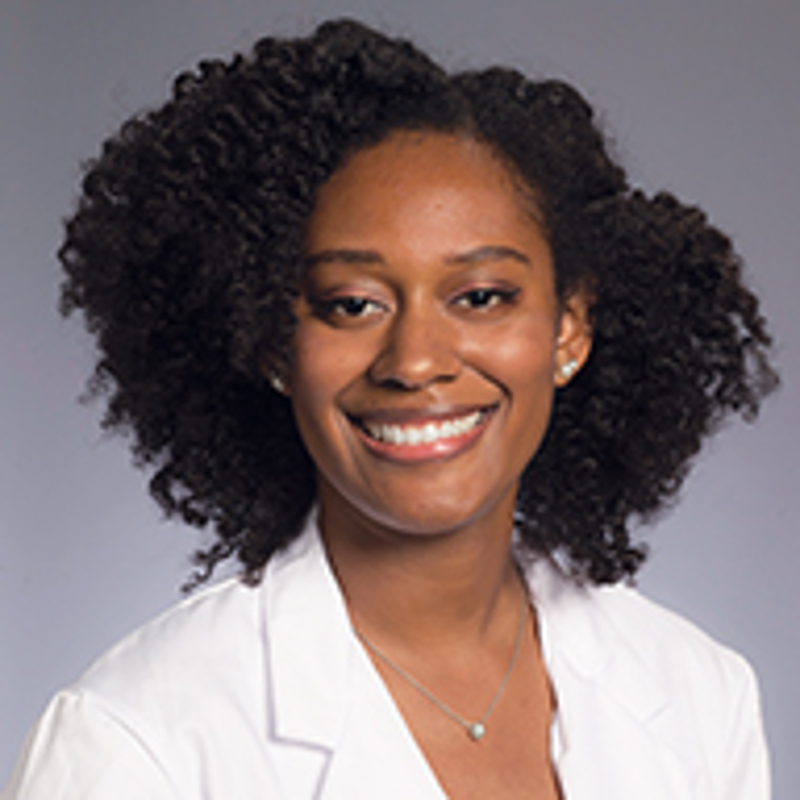New Amos grants help erase Emory medical school debt, boost rural health care
Medical school debt is a lighter burden to Lindsey Garrett 25M because of a new loan forgiveness program that aims to bring more primary care doctors to rural Georgia.

Lindsey Garrett 25M is taking part in a new loan forgiveness program that aims to increase the number of primary care physicians in Georgia.
“I did start having doubts about going into primary care, just knowing that it’s one of the least paying specialties,” says Garrett, who expected to owe at least $200,000 for an education preparing her for family medicine. “The Amos Loan Forgiveness Program is amazing because it’s pointed exactly to what I want to do—primary care. Knowing I’ll have less debt is really reassuring.”
The grants are funded through a $5 million gift from Emory Trustee Kathelen Amos 79C and her husband, Dan Amos. She is the president of the Aflac Foundation; he is Aflac chair/CEO. A previous Amos gift funded the LaHouse Family Medicine Resident Scholars, allowing the School of Medicine to train more family medicine residents.
“Can Emory be about primary care only in Atlanta or is Emory’s medical school for all of Georgia? I would say the latter, but we have to provide pathways for students to get to those sites and settings,” says program director Theodore Johnson II, chair of the Department of Family and Preventive Medicine.
Beyond funding, the program seeks to create a network of alumni practicing across the state. “We’ve got to provide mentors and coaches who are familiar with those settings and can help medical students,” Johnson says. “It’s hard to find your rural practice leads. We’d love to be in close contact with Emory alumni who are in practice in rural settings in Georgia who want to work with medical students.”
Georgia’s patient-to-primary care provider ratio of 1,744:1 is greater than the national average of 1,463, according to the Robert Graham Center’s Policy Studies in Family Medicine and Primary Care. By 2030, the center projects Georgia will need an additional 2,099 primary care physicians.
Garrett, from Snellville, Georgia, wanted to practice in state well before she’d ever heard about the Amos program. She believes that a rural area with a physician shortage would be ideal, as would the stipulation to be clinically active, seeing patients at least half of the time.
After learning in high school about racial health disparities, she chose medicine as her way to make a difference. Grim statistics about maternal mortality for Black women in Georgia motivate her further. “The maternal mortality rate of Black women has actually gone up, and it’s about four times that of white women,” Garrett says. “Obviously, it’s due to a lot of different factors but prenatal care, access to family planning, and other factors like that are important. That definitely inspires me to be in family medicine.”
“I want to be accessible to my community and to help women in the most direct way I can,” she adds. “I hope to be the doctor they go to with their problems, the main person they will seek out for medical advice and care.”
The loan forgiveness program, which began in 2021, will award about 20 grants each year and applicants must go through interviews. Other loan repayment programs have made a difference in Georgia. According to the Georgia Board of Health Care Workforce, 89 percent of doctors and dentists who participated in similar programs remained in Georgia to practice and 72 percent still practice in a county considered underserved in health care.
“Residency is a strong predictor of where you’re going to practice, so we hope people will graduate from Emory medical school, go to Georgia residencies, and stay in the state,” Johnson says. “But we’re also working with residents who went out of state to get them back in Georgia. If you can grab their interest and help them financially during their lean years of medical school and residency, the feeling is they will anchor and have a generation of service to Georgia.”





